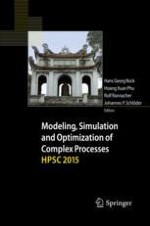2017 | OriginalPaper | Chapter
Optimal Operation of an Evaporation Process
Authors : J. L. Pitarch, C. G. Palacín, A. Merino, C. de Prada
Published in: Modeling, Simulation and Optimization of Complex Processes HPSC 2015
Publisher: Springer International Publishing
Activate our intelligent search to find suitable subject content or patents.
Select sections of text to find matching patents with Artificial Intelligence. powered by
Select sections of text to find additional relevant content using AI-assisted search. powered by
